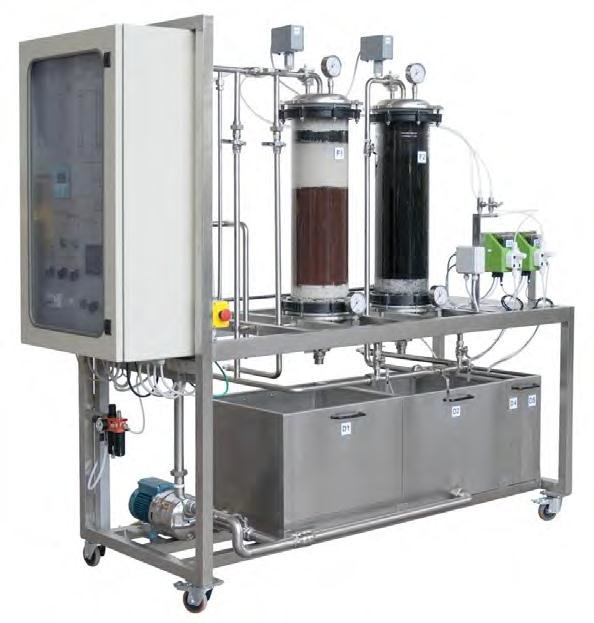Strain Gauges Training System Model MT 015
Strain gauges are used extensively in sensor systems to detect forces, moments and deformations.
Sci-tech Strain Gauges Training System Model MT 015 experimental unit provides a wide-ranging introduction to the fundamentals of measurement by strain gauges. Three test specimens for tension, bending and torsion are each fitted with four strain gauge measuring points. The strain gauges are wired in the full bridge. The specimens are loaded incrementally allowing for the strain reading to be sequentially monitored.
The specimens can be inserted quickly and precisely into the frame. The strain gauge measuring range is protected by a Plexiglas cover, which also makes it clearly visible for inspection purposes. The measurement amplifier supplies the bridge supply voltage, and displays the load-dependent “bridge detuning” digitally in voltage values. The digital display also features a zero balancing function to allow for any preloading.
The various elements of the experiment are clearly laid-out and housed securely in a storage system.
Features
* Basic introduction to measurement with strain gauges1
* Electronic measurement of mechanical variables1
* Test bars for tension, bending and torsion1
* Universal 1-channel measurement amplifier
Strain gauges are used extensively in sensor systems to detect forces, moments and deformations.
Sci-tech Strain Gauges Training System Model MT 015 experimental unit provides a wide-ranging introduction to the fundamentals of measurement by strain gauges. Three test specimens for tension, bending and torsion are each fitted with four strain gauge measuring points. The strain gauges are wired in the full bridge. The specimens are loaded incrementally allowing for the strain reading to be sequentially monitored.
The specimens can be inserted quickly and precisely into the frame. The strain gauge measuring range is protected by a Plexiglas cover, which also makes it clearly visible for inspection purposes. The measurement amplifier supplies the bridge supply voltage, and displays the load-dependent “bridge detuning” digitally in voltage values. The digital display also features a zero balancing function to allow for any preloading.
The various elements of the experiment are clearly laid-out and housed securely in a storage system.
Three additional tension bars are available as accessories, in brass, copper and aluminum, enabling the modulus of elasticity to be ascertained in experiments.
The well-structured instructional material sets out the fundamentals and provides a step-by-step guide through the experiments.
- Fundamentals of measuring with strain gauges
- Strain gauge types and application techniques
- Calculation of the mechanical deformations under tension, bending and torsion
- Correlation between mechanical strain and electrical resistance in a strain gauge with brass, copper and aluminum bars
- Determination of the modulus of elasticity for various materials from the measurement data of a tensile test
- Tension Bar – Brass Model MT 015 – 01
- Tension Bar – Copper Model MT 015 – 02
- Tension Bar – Aluminum Model MT 015 – 03
















